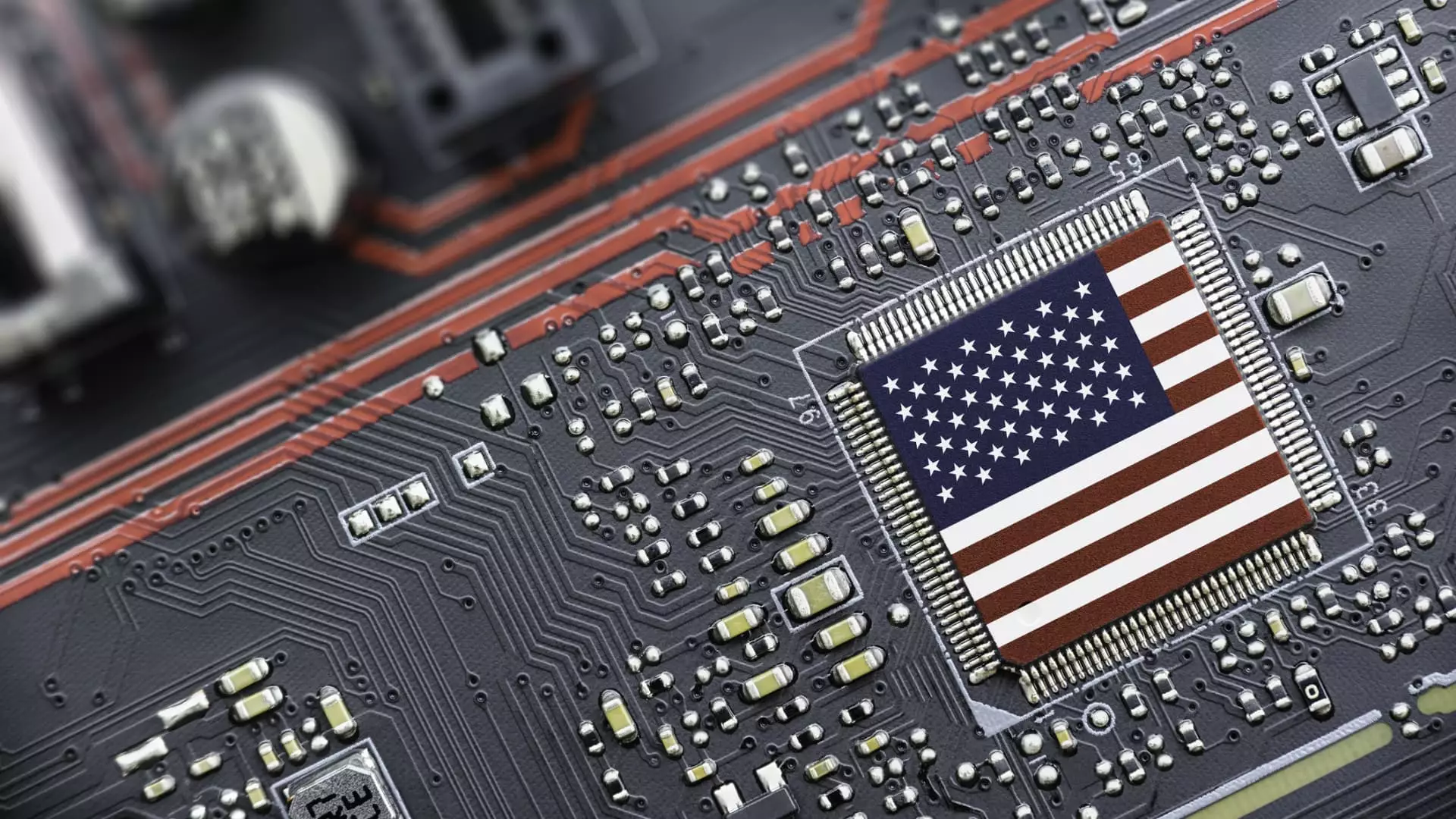The U.S. Commerce Department has marked a pivotal moment in its ongoing effort to bolster national security through a thorough investigation into the import of semiconductor technology. This development—announced in a recent Federal Register notice—comes at a time when the very fabric of modern electronics is interwoven with semiconductors, magnifying the stakes involved. With chips being integral to smartphones, computers, and even essential technologies like medical devices, the U.S. finds itself at a crossroads, questioning its excessive dependency on foreign semiconductor sources.
This investigation isn’t merely a bureaucratic exercise; it reflects deeper economic concerns. As the Trump administration seeks to reshape American manufacturing, particularly in the technology sector, the urgency of this probe resonates. Previous tariff exemptions proposed by the administration are now called into question, indicating a significant pivot in policy aimed at self-sufficiency. Pursuing domestic chip production is not just about protecting jobs; it is about safeguarding national interests in a world increasingly driven by technology.
Implications of the Semiconductor Inquiry
The scope of the Commerce Department’s investigation stretches far and wide, covering an extensive array of components from silicon wafers to chip fabrication tools. This breadth is vital, given the interconnected nature of the semiconductor supply chain. A potential increase in tariffs comes hard on the heels of past tariff discussions that had seemingly excluded many electronic products. The inquiry’s outcome could lead to broader tariffs that impact a variety of technologies, altering the landscape of the electronics market.
President Trump’s latest remarks hint at a forthcoming wave of tariffs specifically targeting imported semiconductors. This announcement aims to tackle urgent dependencies that threaten the integrity of U.S. interests. Such a move can be viewed both as a response to a growing competitive threat from international markets and an effort to restore American leadership in technology innovation. Despite the potential bumps on the road to implementation, this direction offers a vision for technological independence, albeit with its embedded risks.
The Role of Public Feedback
To further the investigation, the Commerce Department has announced a call for public input, which remains open for 21 days. Such a move encourages stakeholders, ranging from manufacturers to consumers, to weigh in on the anticipated ramifications of this investigation. Engaging the public is a strategic play, as it diversifies perspectives and potentially galvanizes support for a change in trade policies.
This participatory approach underscores the significance of collaboration across the technology sector. With influential players like Nvidia announcing plans for domestic AI supercomputing hubs, it is clear that the industry is responding to federal calls for revitalization. A testament to this dynamic can be seen in initiatives like the $280 billion CHIPS and Science Act, aimed at reshoring semiconductor production. As companies navigate this landscape, their feedback during this critical window could shape policies that will ripple through the economy for years to come.
A Global Perspective on Semiconductor Production
America’s pursuit of greater semiconductor independence sheds light on the global technology supply chain, which remains predominantly reliant on countries like Taiwan and South Korea. The complexities of this supply chain intertwine economic dependencies with national security issues. Reducing reliance on foreign-produced semiconductors is not just an economic strategy but also a geopolitical necessity.
Recent investments from titans like Taiwan Semiconductor Manufacturing, which has pledged an additional $100 billion in U.S. production capabilities, signal a shift in manufacturers’ mindsets. This trend reflects a growing recognition of the need for geographic diversification in semiconductor production, illustrating how market forces can align with national objectives. It is an ongoing balancing act between leveraging global efficiencies and maintaining strategic autonomy.
The semiconductor investigation highlights the urgency of reassessing America’s strategy in technology. As global competition intensifies and national security concerns grow more complex, the U.S. is taking pivotal steps toward redefining its technological landscape. The future of America’s imports, innovation, and influence hinges on whether it can effectively stake its claim in the semiconductor arena—an endeavor marked by its challenges but potentially rich in rewards.

